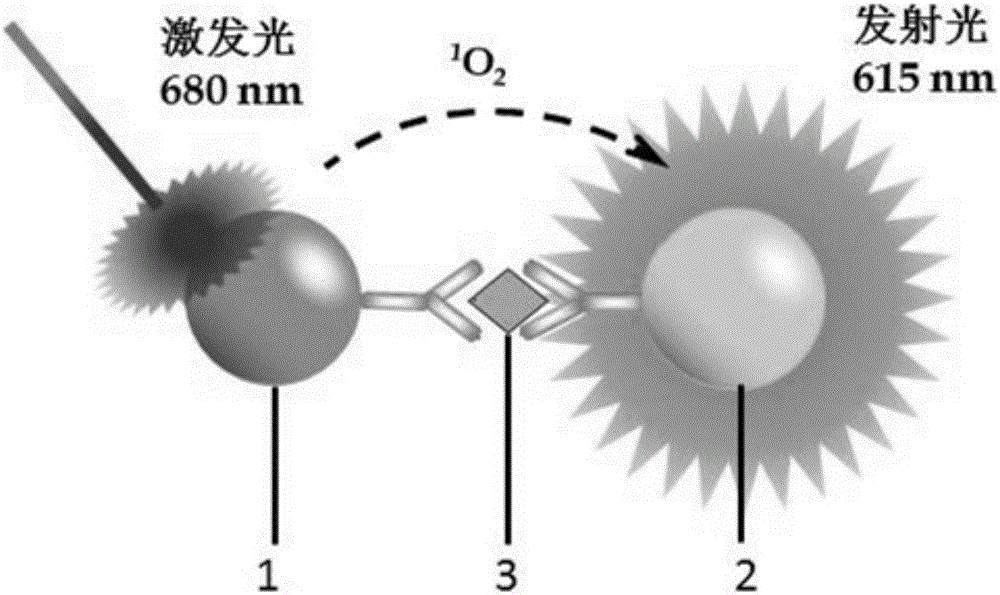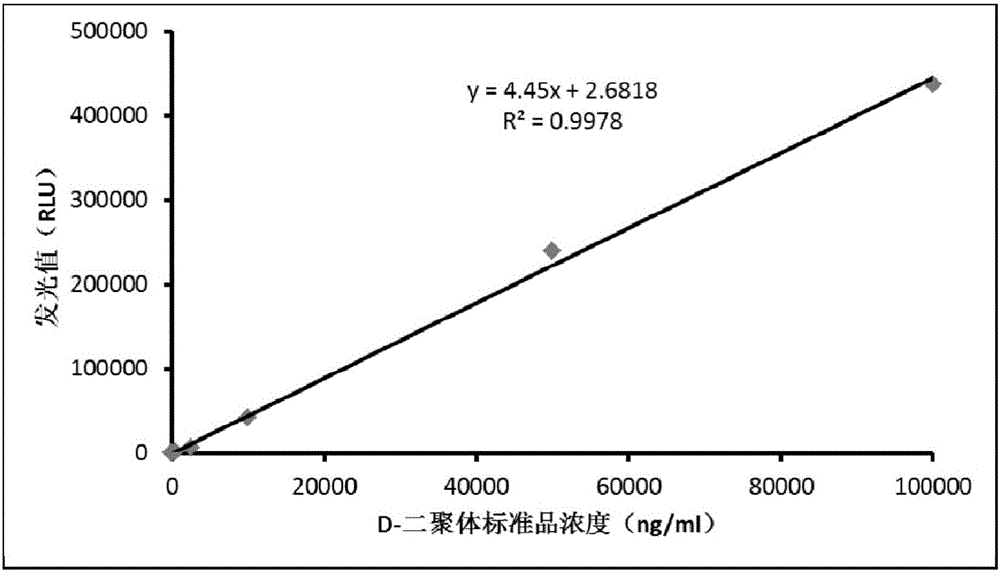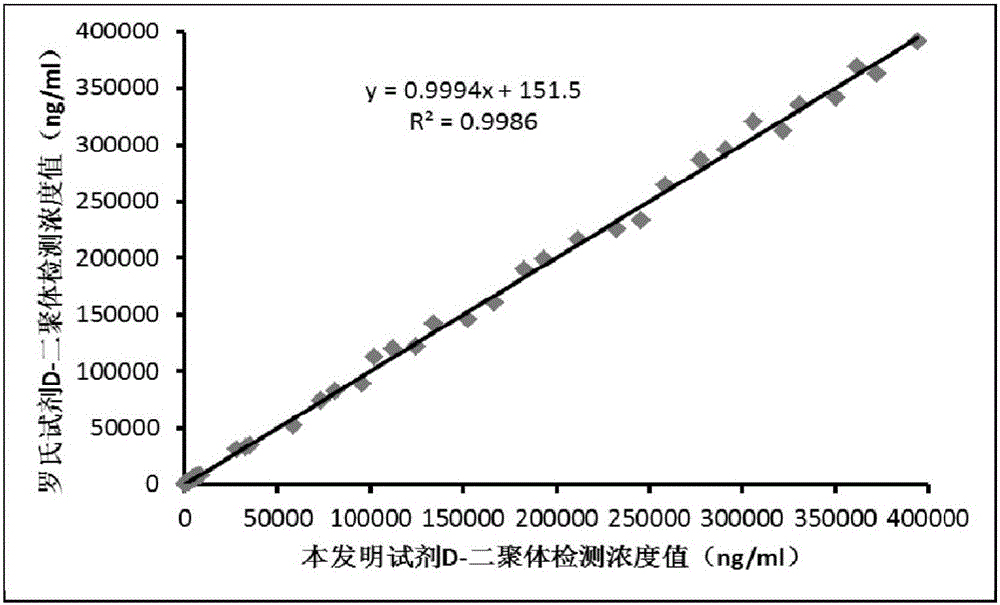One-step homogeneous phase D-dimer detection kit and application thereof
A detection kit and dimer technology, which is applied in the field of one-step homogeneous D-dimer detection kits, can solve the problems of poor label stability, heterogeneous reaction, large intra-batch and inter-batch variation, etc. Accuracy, specificity, and easy operation
- Summary
- Abstract
- Description
- Claims
- Application Information
AI Technical Summary
Problems solved by technology
Method used
Image
Examples
Embodiment 1
[0040] Example 1 Kit
[0041] Sources of raw materials and reagent formulations in the experiment:
[0042]
[0043]
[0044] 1. Anti-D-dimer antibody coupled luminescent microspheres, taking aldehyde-based luminescent microspheres as an example:
[0045] 1) Add 0.1 mg of antibody to an ultrafiltration tube, centrifuge for 10 minutes, wash with HEPES buffer (pH7.4) for 6 times, and dilute the antibody to 1 mg / ml for use. Take 1 mg of luminescent microspheres, wash twice with HEPES buffer (pH7.4), centrifuge, and remove the supernatant.
[0046] 2) Add the antibody solution to the luminescent microspheres (purchased from Platinum Elmer) and resuspend.
[0047] 3) Add 1.25 μl of 10% Tween20.
[0048] 4) Add 10 μl 400mM NaCNBH 3 , add HEPES buffer to make up the volume to 200 μl.
[0049] 5) Shaking reaction at 37°C for 24-48 hours.
[0050] 6) Blocking: Prepare 65 mg / ml CMO solution with 800 mM NaOH. Add 10 μl of CMO solution to the reaction system.
[0051] 7) Shaki...
Embodiment 2
[0072] Application of embodiment 2 kit
[0073] The method for using the kit comprises the following steps:
[0074] 1) Add the sample, anti-D-dimer antibody-coupled luminescent microspheres and anti-D-dimer antibody-coupled photosensitive microspheres into the reaction well of the kit, and mix and react for 5-60 minutes;
[0075] 2) The reaction wells are irradiated with excitation light, and the luminescence of each reaction well is measured to obtain the light signal value.
[0076] The reaction wells of this kit can be microwell plates, microfluidic reagent plates, reaction cups, reaction tubes, etc.
[0077] Kit methodology evaluation of the present invention:
[0078] 1. Linear
[0079] Prepare D-dimer standard solutions with concentrations of 0ng / ml, 100ng / ml, 500ng / ml, 2500ng / ml, 10000ng / ml, 50000ng / ml, and 100000ng / ml. Add 5 μl of standard substance, 20 μl of luminescent microspheres coupled with anti-D-dimer antibody (final concentration 10 μg / ml), and 20 μl of p...
Embodiment 3
[0097] It is basically the same as Example 1, except that the luminescent microspheres used are carboxyl luminescent microspheres, and the photosensitive microspheres used are carboxyl photosensitive microspheres;
[0098] After verification by the methodology of Example 2, the linearity, accuracy, precision, analytical sensitivity, specificity and correlation are basically the same as those of Example 1.
PUM
| Property | Measurement | Unit |
|---|---|---|
| concentration | aaaaa | aaaaa |
Abstract
Description
Claims
Application Information
 Login to View More
Login to View More - R&D
- Intellectual Property
- Life Sciences
- Materials
- Tech Scout
- Unparalleled Data Quality
- Higher Quality Content
- 60% Fewer Hallucinations
Browse by: Latest US Patents, China's latest patents, Technical Efficacy Thesaurus, Application Domain, Technology Topic, Popular Technical Reports.
© 2025 PatSnap. All rights reserved.Legal|Privacy policy|Modern Slavery Act Transparency Statement|Sitemap|About US| Contact US: help@patsnap.com



